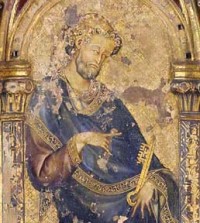The vigour with which the iconoclasts of the English Reformation once exterminated religious art is encapsulated in the diaries of William Dowsing – a text that should be required reading for all students of English history. The Puritan art-destroyer par excellence, Dowsing saw it as his divinely appointed mission to complete the purging of the nation’s churches and cathedrals that had been initiated, with muscular efficiency, by the first bishops of the Church of England. He followed in the footsteps of men like Hugh Latimer, who in the 1530s had staged a series of “jolly musters” in London’s Smithfield Market, publicly incinerating hundreds of wooden statues of Christ and the Virgin, the saints and the prophets. Dowsing himself was active a century later, in the 1640s, particularly so in that part of Suffolk now known as “Constable Country”. His tersely expressive notebooks contain a proud tally of the many destructions that he supervised:
 “Suffolk, at Haver … We broke down about an hundred superstitious pictures; and seven fryars hugging a nunn; and the picture of God and Christ; and diverse others very superstitious and 200 had been broke down before I came…
“Suffolk, at Haver … We broke down about an hundred superstitious pictures; and seven fryars hugging a nunn; and the picture of God and Christ; and diverse others very superstitious and 200 had been broke down before I came…
“Sudbury, Suffolk, Peter’s Parish … We brake down a picture of God the Father, 2 crucifixes, and pictures of Christ, about an hundred in all; and gave order to take down a cross off the steeple and diverse angels, 20 at least, on the roof of the church.
“At Clare, we brake down 1000 pictures superstitious; I brake down 200; 3 of God the Father, and 3 of Christ, and the Holy Lamb, and 3 of the Holy Ghost like a dove with wings; and the 12 Apostles were carved in wood, on the top of the roof, which we gave order to take down; and 20 cherubins...

The Westminster Retable
22-05-2005

